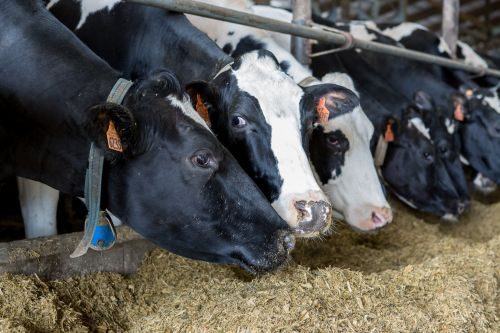Shedding Light on NDF Digestibility
Posted: February 1, 2017 | Written By: Carla Kuehn, Ph.D. - Form-A-Feed Nutritionist

Dairy producers understand the importance of feeding good quality forages. Feed nutritionists are always looking for ways to use the best quality forages in diets of the highest performing groups of animals. Digestible forages support high production by providing the necessary energy and nutrients. They also aid in rumen health and help promote high intakes. All of this adds to a profitable dairy.
Traditionally, dairy diets have focused on the amount of fiber in the diet in the forms of NDF and ADF. Many of us were trained to keep NDF and ADF at certain levels throughout various production stages. However, from these numbers, we didn’t always have a good feel for that portion of the fiber that was digestible and provided usable nutrients, and that portion that was indigestible.
Forage testing laboratories have typically estimated the indigestible fiber by simply taking the amount of lignin and multiplying it by 2.4. By doing this, we assumed that all forage species (grasses or legumes) digest similarly. This is not the case as there are fiber composition differences in grasses and legumes that affect their digestibility in the rumen. Therefore, new methodology was necessary to help nutritionists predict forage digestibility in the lab and ration software.
Today, technology available in forage testing labs and ration modeling software is helping us look more closely at the NDF and ADF portions and moving us towards better formulating diets by considering NDF digestibility. The NDF portion of the fiber is divided into two portions: the digestible portion (dNDF) and the undigestible portion (uNDF). To better understand the speed at which forage digests in the rumen, time points for uNDF have been established. Laboratories predict the amount of forage left undigested (or calculate that which is digested) at 30, 120, or 240 hours.
By determining the amount of forage that remains undigested at 30 hours (uNDF30), we have an estimate on the “fast-pool” of digested forages. An adequate pool of fast digesting forage can ensure that rumen space becomes available faster and the animal has the potential to eat more feed. A high producing animal may consume 7-9 lbs. per day of this portion of forage per day.
The undigested forage in the rumen at 240 hours (uNDF240), helps us more directly determine intake limitations due to rumen-fill. While this undigestible portion of the forage aids in maintaining proper rumen function, too much of this portion in the diet fills up the rumen and slows down the rate of passage. Therefore, the animal cannot reach their intake potential. We can estimate the animal’s rumen-fill by determining pounds of uNDF240 consumed and dividing it by the animal body weight. This number should be between 0.3 and 0.4%. We need a minimum amount to allow for adequate rumination, but as we near the maximum, the rumen is full of undigestible feed and deters intake.
It can be difficult to control the digestible forage that we have on the farm as it varies due to hybrid, maturity, growing conditions and harvest management. However, by knowing the digestibility differences of the forages at different time points, we can better allocate forages for different animals or production stages. We can also make ration adjustments to reduce the undigestible fiber and replace with more digestible non-forage fiber sources like soy hulls or corn gluten feed. Bunk management is also important when considering forage digestibility. If cows are limited by rumen-fill and have lower intake, we may need to look more closely at bunk space, grouping situations, and the eating time cows have at the bunk.
As we continue to push for higher production and more efficiencies in cow diets, it is necessary to put more light on fiber digestibility, as it is a key factor in intake and performance.